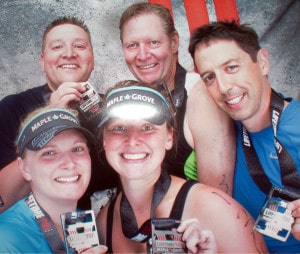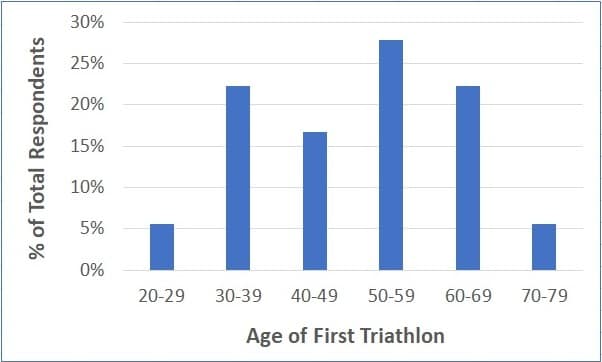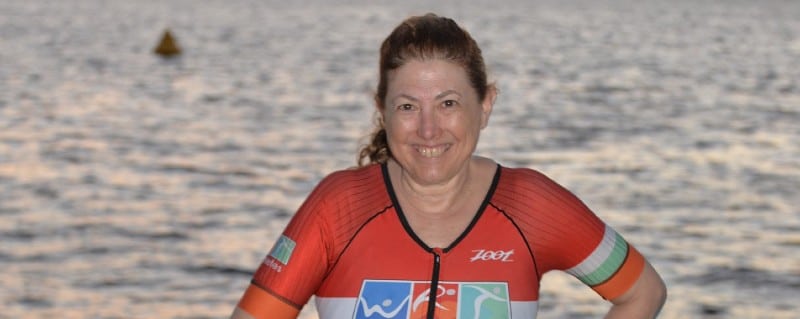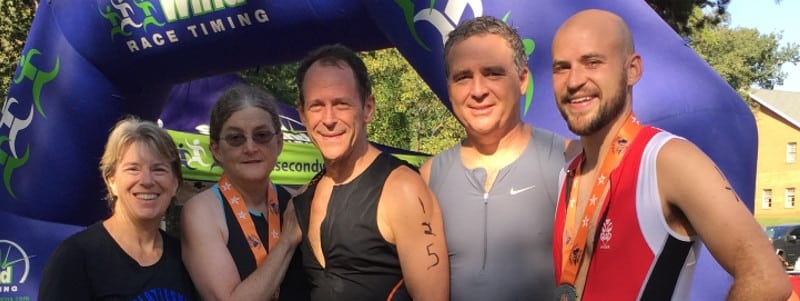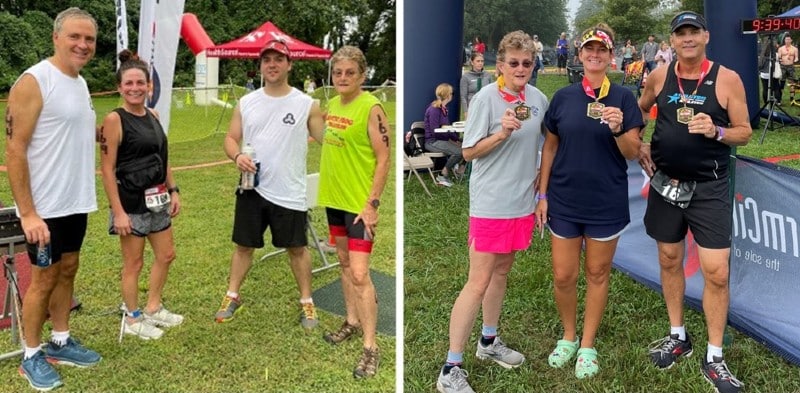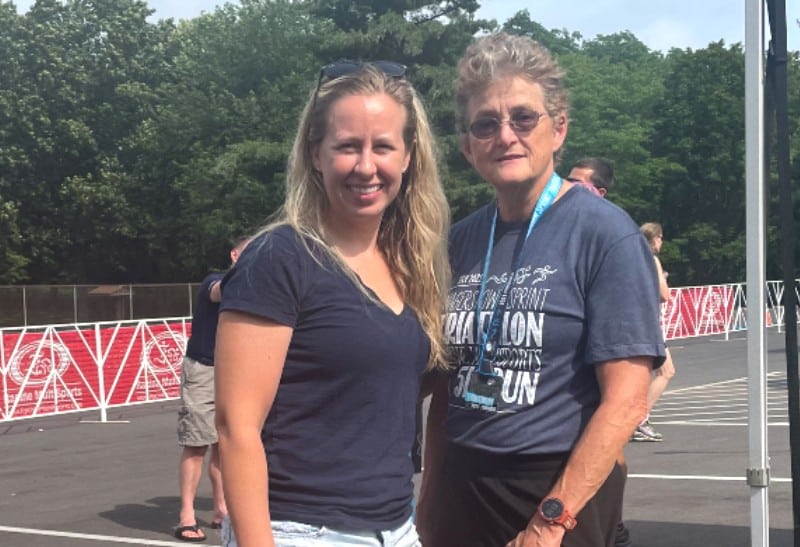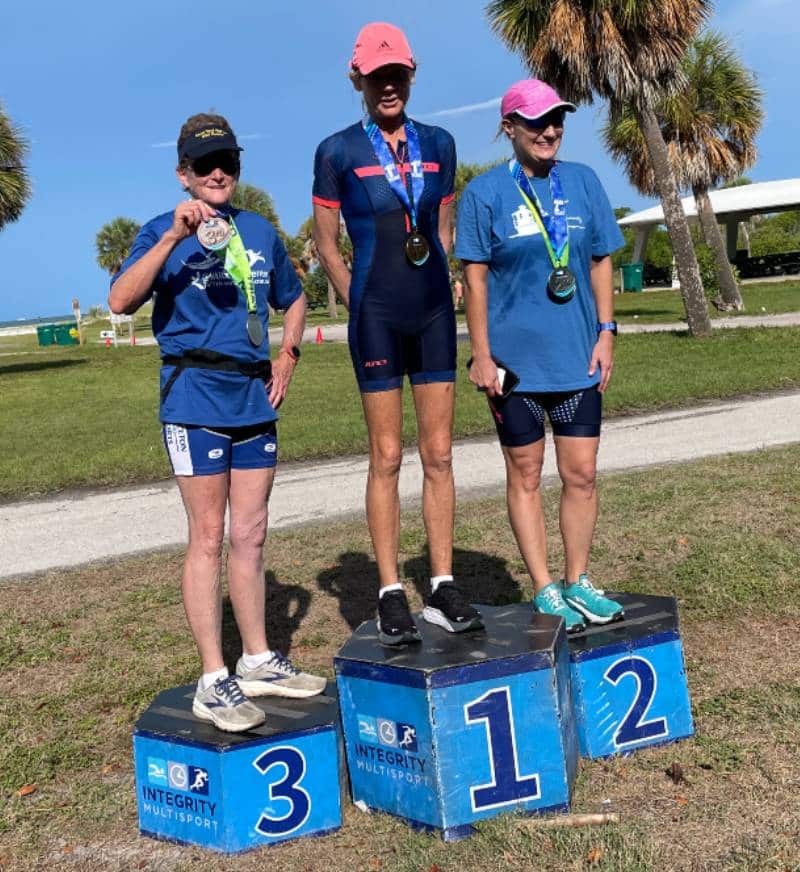Triathlon Is Life Changing – Johny Dignam’s Story
For Johny Dignam and his wife, Tracey, triathlon has been life-changing.
“My wife Tracey says she waited 30 years for this version of me! I have always had this stored energy in me. The only way I could relax [before triathlon] was with the consumption of large volumes of alcohol.”
Johny’s passion and love for Ironman training has become a new, healthy, life-changing outlet for this energy.
“Triathlon training and the inspirational people we have met have had a profound positive effect on my general well being. It has also shown that there are some amazing people in this world from all different walks of life.”
Introducing Johny Dignam
Johny Dignam, age 57, has been married to Tracey for 33 years. He has always been an active, high energy guy with hobbies that include surfing, swimming, and mountain biking.
He works as Refractory Installer for Pyrotek, a company that produces high temperature materials used in handling molten aluminium (or aluminum if you are from the USA). His typical work day begins with an hour long commute to be onsite at 4:30 am for a 10-hour workday. At the end of his workday, there is another one hour drive to return home. Considering other family commitments, this does not leave much time for training and sleeping.
However, as you will see, that hasn’t stopped Johny from pursuing aggressive goals along his triathlon journey.
Johny’s Path to Triathlon
The journey which has led to triathlon for Johny Dignam began around six years ago. It was a sunny Sunday morning in Sydney, Australia’s Central Business District.
Johny was sporting a massive hangover after a late night on the town. Meanwhile, over three thousands runners gathered for the Sydney Marathon.
Seeing the excitement around the race and realizing that he wanted to make a change in his life, Johny decided he would complete the next year’s half marathon in Sydney.
Fast forward one year. Johny had just completed the Sydney half marathon when he met an old friend. They talked about running and eventually triathlon. A few months passed and the two of them met again, this time at a dinner party with mutual friends. The conversation again drifted to running and triathlon.
The next day, Johny registered for Ironman 70.3 Port Maquarie along with a friend and his nephew.
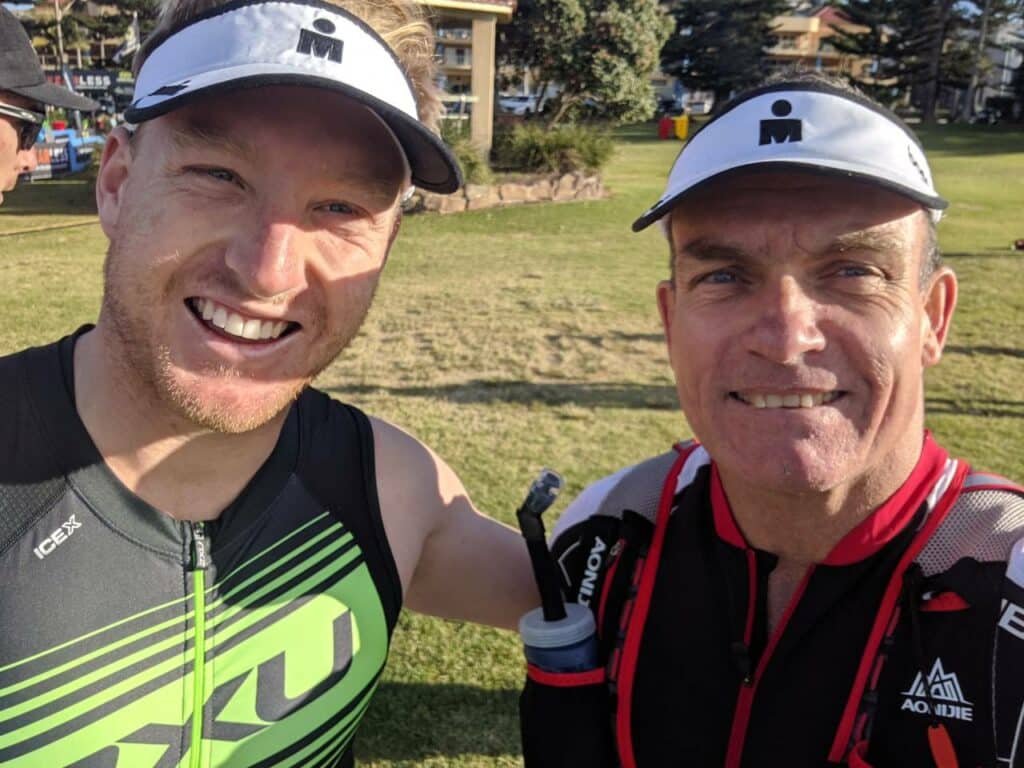
Triathlon History
Johny’s first triathlon was actually an international (Olympic) distance race in Wollongong, Australia in March 2019. He planned this event as a lead up to the Port Maquarie 70.3 two months later.
“My first triathlon was fun but underwhelming. However, since I had already signed up for the 70.3 in May, I continued training” said Johny.
Before the Port Maquarie race, he completed a 70.3 practice triathlon as part of his training. Then, in May, he successfully completed his first 70.3 and promptly vowed to never do one again.
However, before leaving the race venue, Johny wandered over to the finish line,
“I watched the final people complete the full Ironman. That night, I saw several athletes, some over 70 years old, complete the hardest Ironman race in Australia. The atmosphere and sheer determination of some of the athletes stirred something in me I had never experienced before. I was completely mesmerised and overwhelmed by the whole event.
“The next day, I signed up for my first Ironman, Ironman Australia.”
Then There Was Covid
The scenes in Port Maquarie on that May 2019 evening had truly impacted Johny. He continued to train for his next race as most of the world locked down in early 2020.
With his sights still set on Ironman Australia sometime in the future, Johny completed a virtual Ironman of his own design. He swam 4 km (2.5 miles) in the local pool. Next, he cycled for eight hours on his bike trainer. He finished it with a 26.2 mile marathon around his local neighborhood.
“I finished about 11 pm that night. I think this set me up mentally for Ironman Australia.”
In 2022, Johny was able to finally reach his goal of completing Ironman Australia. Once again, he took time to watch and be inspired by the final competitors completing the course.
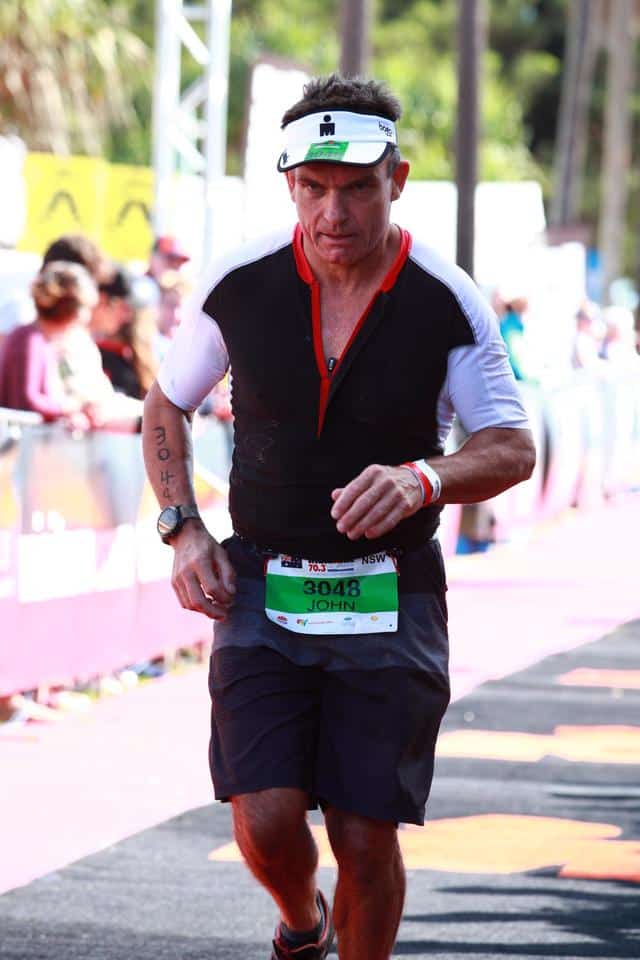
Not Stopping Here
With Ironman Australia behind him, Johny set a new goal, to complete one full Ironman and one half distance triathlon each year.
“The people I have met have helped push me to places I would’ve thought were unachievable several years ago. Sure, age, sickness, and injury are all significate barriers for maturing athletes. However, if we push ourselves out of our comfort zones while listening to our bodies, we continue to grow.”
Training for Triathlon Has Been Life Changing
To reach his new goal, Johny decided to develop a training plan that fits his long workdays and family commitments yet provides enough rest to prevent illness and injury.
Johny has taken this approach in part because of the difficulty getting age specific training information. Like many, he found the available print and on-line training resources to be aimed at the younger generation. One approach that could have worked is joining a triathlon club. However, this option didn’t work for him.
Next best for Johny has been to subscribe to two triathlon training plans which he considers “great value for the money”:
- Phil Mosley Intermediate Masters 140.6 plan on TrainingPeaks. This plan provides a schedule of swim, bike, run, and some strength and conditioning workouts to be completed each week. It also provides the number of hours for training and the intensity target for each week for the months leading up to the triathlon.
- Low Volume Triathlon Plan from TrainerRoad. Most of his bike workouts follow the TrainerRoad schedule.
He has compared these two plans and selected the portions from each that work best for him.
One limitation is that even the ‘masters’ plans seem designed for a large age group – age 40 and over. And, many feel they are tailored to the younger end of this age range.
Combining Indoor and Outdoor Training
During the main part of the training period, Johny trains 7 to 10 hours per week. Given his work schedule, family commitments, and priority for rest and recovery, Johny completes most of his long training blocks on the weekends.
For the rest of the schedule, Johny has developed an innovative approach that combines training within his house or near it and longer weekend sessions outdoors.
Riding Indoors Builds Fitness and Mental Toughness
As already noted, Johny usually follows bike workouts from TrainerRoad. Each week, he completes one threshold workout, one VO2max workout, and one long ride of three to fours hours.
Interestingly, over 90% of his bike training is indoors on a trainer. This is because he does not feel safe riding on the road. However, he does some workouts on his mountain bike on a short hilly track outdoors near his home.
Is indoor training for the bike effective? This was a question Johny was asking going into last year’s Ironman triathlon.
“I wasn’t sure how I would do on the bike. My training included weekly, long indoor rides on the trainer for three hours or more. I did one or two rides of nearly seven hours outside before the event. As it turned out, I felt more confident on the bike leg of the race as the day went on.
“Having said that, it was still a slow time of 7 hours, 30 minutes, but I got off the bike and could run, and that’s all that mattered.
“I think the long indoor sessions prepared me mentally for the day.”
Johny pointed out that several professional triathletes, including Jan Frodeno and Lionel Sanders, also rely on indoor training for the triathlon bike leg.
Cross Training for the Triathlon Run
Johny also cross trains for running to avoid overuse injuries. He has found water running using the Fluid Running system to be effective for building running fitness and preventing injury. “Running in deep water is harder than people think.” You can read the story of the company’s founder, Jennifer Conroyds, here.
Typical Training Schedule
The table below summarizes a typical week’s training while preparing for an Ironman triathlon. It also highlights some of the other tools Johny has identified for training at home.
| Swim | 1x – Swim simulation using ZEN8 bands 2x – Pool swims (weekend) |
| Bike | 1x – Threshold workout using trainer 1x – VO2max workout using trainer 1x – Long ride either using the trainer or riding outdoors |
| Run | 1x – 5 km run using Zwift mid-week 2x – 30-40 minutes water running after a pool swim using H2Go app from Fluid Running * beginning 3 months before an Ironman triathlon, he will start doing longer runs outside |
| Mobility & Strength | 3x – 20 minute using Calimove mobility app, Skill Yoga app, or Sean Vigue Pilates book/video * one mobility workout is done on Monday afternoon as part of his recovery day |
Final Preparations for a Race
In the final weeks leading up to a full or half distance Ironman triathlon, Johny focuses on the “little things” that left unprepared can change the complexion of one’s race.
“Try to have all the little things in place that may impact your day. Come race day, you want to be comfortable and able to enjoy the moment.”
He also completes some long swims and long rides, focusing on completing them without worrying about his time. The main goal is to build confidence for race day.
For example, these last weeks typically include a 4 km (2.5 mile) pool swim and at least one longer open water swim. He will also complete at least one long bike ride to become comfortable being on the bike for several hours. Before last year’s triathlon, he rode seven hours along the bike track on a freeway. This ride “definitely helped on race day”.
During this period, he will practice changing a flat tire. He also uses this time to test hydration, nutrition, and any new shoes or clothing he may wear on race day. He doesn’t want any unexpected ‘tummy problems’ or body chafing during the race.
If the next race is a short (sprint or international) distance race, he may simulate the race on a course near his home. This was helpful for Johny before his first triathlon and can be for first-time triathletes.
However, for long course triathlons, he does not do a complete simulated race. He wants to arrive at the race fully rested and recovered.

Refining the Training Plan Based on Experience
Johny has made note of the workouts that have helped him most and is using this experience to develop his own basic training plan. He has offered to provide a copy of the current working version of his plan. “This is only a draft. I will probably update it after this year’s events.”
You can request a copy of Johny’s plan using the Comments section below.
Lessons
What are the main lessons Johny has taken from his time training for and competing in triathlon? Here are his top four.
- We are all different. Therefore, our triathlon training will reflect our differences in fitness and in the time we can devote to training. On the other hand, find a plan that works for you and try to stay with it.
- Nutrition is the one of the unwritten disciplines of triathlon. Eat healthy, basic food with a good source of protein and fresh vegetables. Alcohol and sweets are not our friends. Have a tested nutrition plan for the race in place weeks before race day.
- Rest and recovery are essential. Listen to your body. If you are constantly struggling to hit target heart rate zones or complete workouts, you may need a recovery week.
- Come race day, just enjoy the experience. There’s no point worrying about the weather or if you have done enough training. Make the most of the conditions and be thankful that you have made it this far. Also, be thankful for your loved ones and others who have helped you get to this place.

Advice for Those Who Want to Take Advantage of the Life Changing Benefits of Triathlon
Here is what Johny told me when I asked what advice he would give to an older person thinking about doing a triathlon:
- ”Don’t believe that you’re too old. The over-50 age groups in triathlon events have some of the largest numbers of participants.
- “In this sport, there are people from all different backgrounds – gifted athletes, everyday mums and dads, people with disabilities, and others just like you – all doing amazing things. You can do this!
- “Don’t think too much about it. Sign up for an event and give yourself 12 months to build. Find a coach, join a club, or get some sort of plan.”
Want a Copy of Johny’s Training Plan? Have Questions for Him?
Want a copy of Johny Dignam’s Ironman triathlon training plan? Let us know by posting a Comment below.
Do you have other questions for Johny? You can also ask these in the Comments section.
Comments: Please note that I review all comments before they are posted. You will be notified by email when your comment is approved. Even if you do not submit a comment, you may subscribe to be notified when a comment is published.


